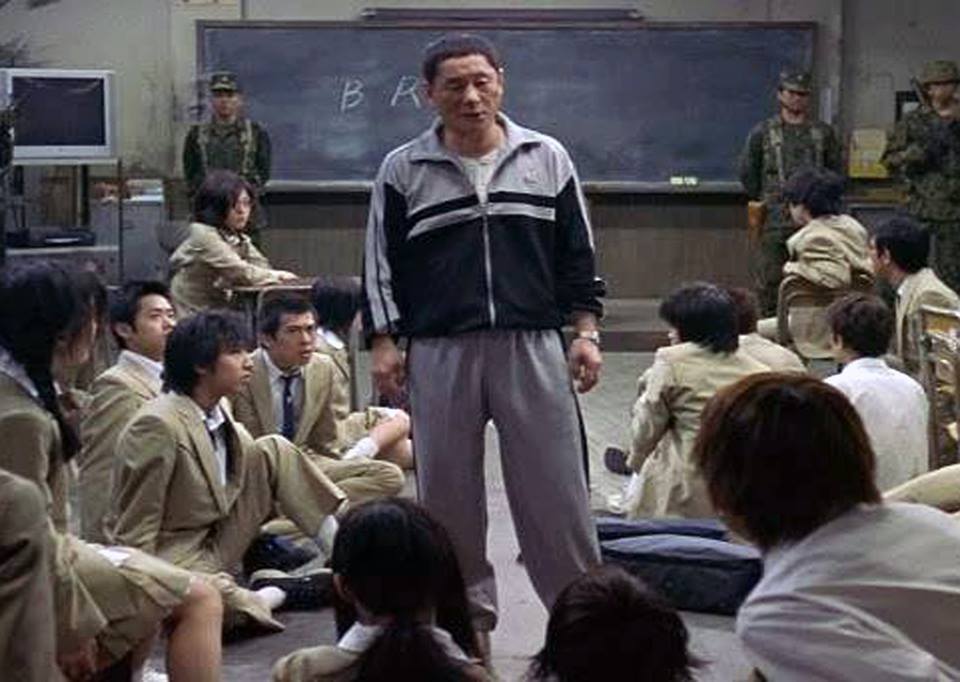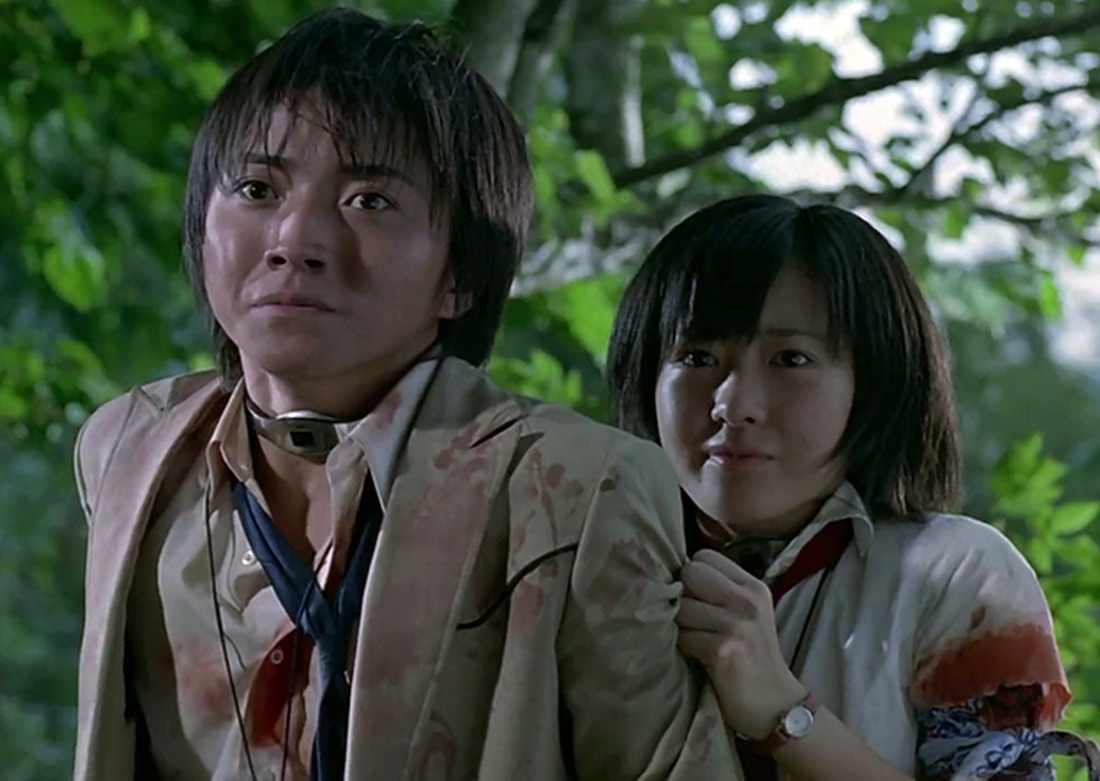curator's noteThis week our writers delve deep into the brutal fight for survival in their exploration of Kinji Fukasaka's Japanese teen-horror BATTLE ROYALE (2000). THE GAMES WE PLAYEm HoughtonRespect for one’s elders is an important cultural attitude in Japan and, as the opening scenes of BATTLE ROYALE (Kinji Fukasaku 2000) tell us, delinquent school children have become a serious issue in this dystopian world. This exasperating refusal to follow the rules set out by the older generation results in the BR Act being passed, whereby students are forced to battle to the death until only one remains. By doing so, the film acts as a metaphor for how many young people living in the world feel; they can all too often feel helpless in a world controlled by adults. Graphic violence between children always makes for shocking viewing in both cinema and literature. Examples include the death and subsequent cannibalistic consumption of Piggy in THE LORD OF THE FLIES (Harry Hook 1990) as well as the more contemporary issues presented in THE HUNGER GAMES series (Gary Ross and Francis Lawrence, 2012-). BATTLE ROYALE’s violence is considered more extreme than many other examples, with intensely graphic death scenes as classmates settle old school-born scores. The violence in BATTLE ROYALE questions ethics and morality of adolescents as some children fully participate in The Games and aim to kill as many others as possible, while others refuse to partake and resort to suicide. The film creates a powerful dichotomy of peace and chaos; amongst the harrowing violence, death and destruction the children form friendships and even romances with each other. Child violence is always viewed as shocking when displayed on screen as it challenges normal societal expectations for how children should act. It is even more so, when the children are becoming violent as an act of rebellion against the adults holding them to these expectations. Every day this week a different writer will provide their perspective on our MUBIVIEWS film and each post will be open to comments from our readers. Watch BATTLE ROYALE on mubi.com until 30 May 2017 and join the discussion!
0 Comments
curator's noteThis week our writers delve deep into the brutal fight for survival in their exploration of Kinji Fukasaka's Japanese teen-horror BATTLE ROYALE (2000). SOCIETY'S BATTLEMATTHEW WEARSReleased at the start of the millennium, BATTLE ROYALE (Kinji Fukasaka 2000) explores multiple issues that were at the forefront of concern for Japanese society. Even today the film holds just as potent a message about youth and a society addicted to violence. The film's premise - school children fighting to their death - can at first appear to be totally absurd. But as with other socio-political horrors, such as DAWN OF THE DEAD (George A. Romero 1978) and THE HOST (Bong Joon-Ho 2006), this initially unrealistic concept works in its favour. The film presents a world filled with insanity and, most disturbing of all, a world that is not too far away from our own. Commenting on western society's relationship with violence, the film uses excessive bloodshed, overly-malicious characters and inventive weapons such as tasers and crossbows to create a world in which humans must commit the worst atrocities in order to survive. The most disheartening aspect is just how fast a person's character and morals can change when their own interests are at stake, displayed at its most extreme when Kazushi Nîda (Hirotito Honda) viciously shoots Yoshio Akamatsu (Shin Kusaka) with a crossbow in the first few minutes of the battle. BATTLE ROYALE is a film that asks the audience to consider how far they would go to survive in the same situation but also how far society would go when faced with equally difficult problems. The film highlights the inexcusable lack of humanity that already exists within our everyday culture and acts as a forewarning for what is seemingly imminent. The film is a harrowing depiction of a bleak future, a future where all our current failures are maximised to their fullest. Most harrowing of all is the lack of alternative choices that the film gives us. Every day this week a different writer will provide their perspective on our MUBIVIEWS film and each post will be open to comments from our readers. Watch BATTLE ROYALE on mubi.com until 30 May 2017 and join the discussion!
|
MUBIVIEWSOne MUBI film, five perspectives, endless possibilities. Archives
July 2017
Categories
All
|




 RSS Feed
RSS Feed
